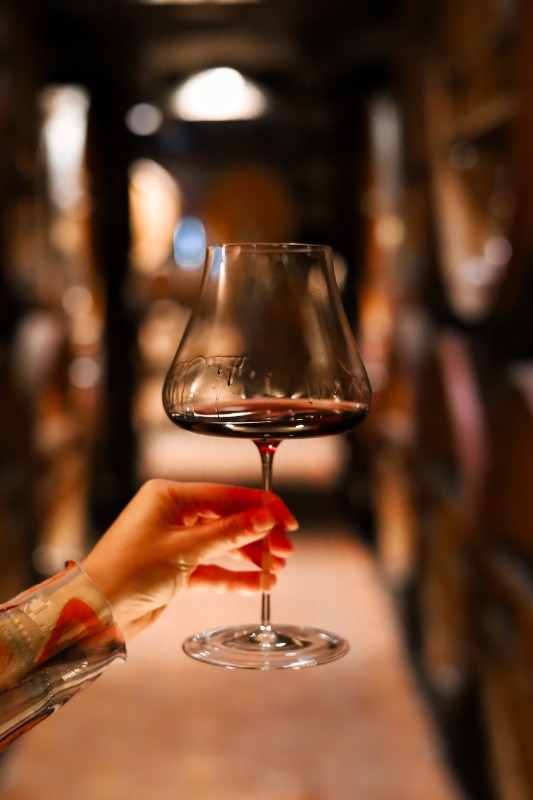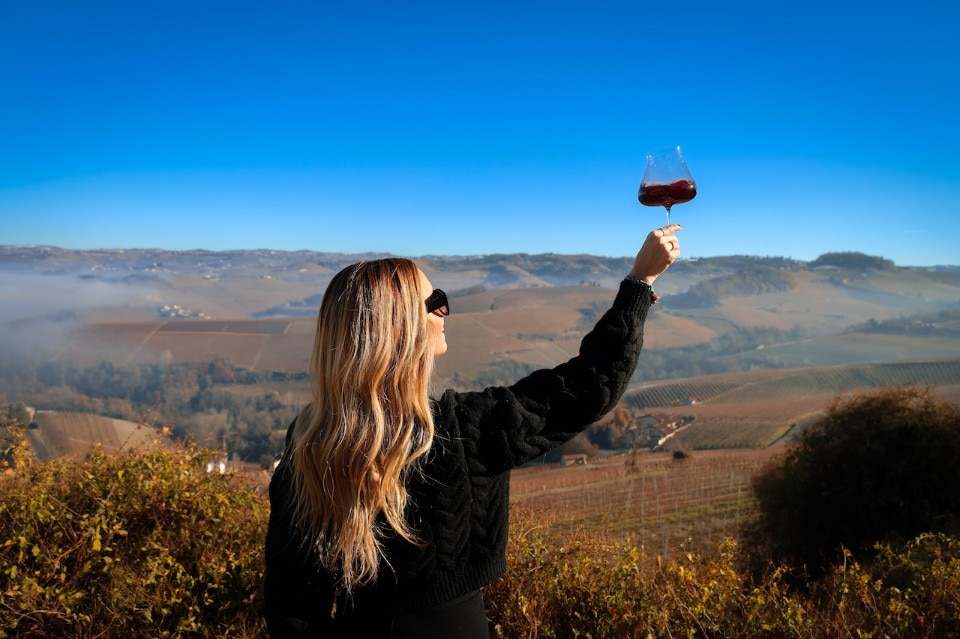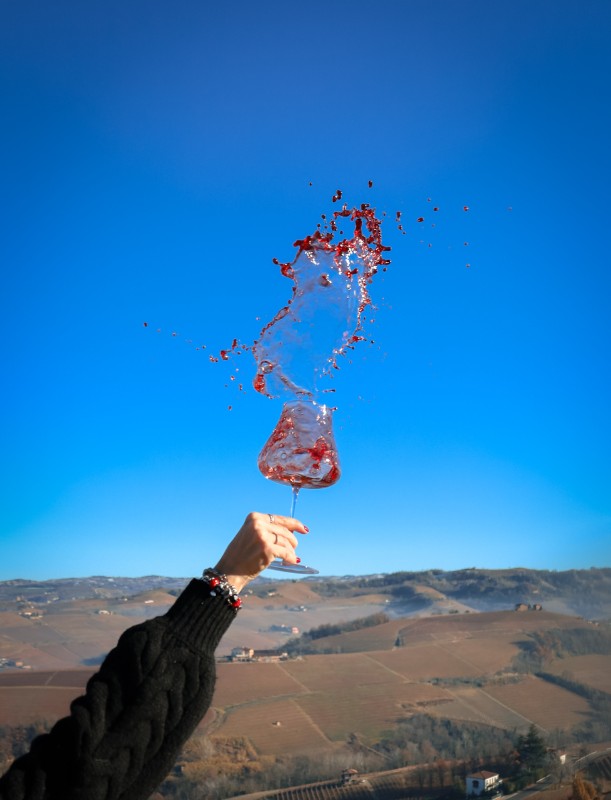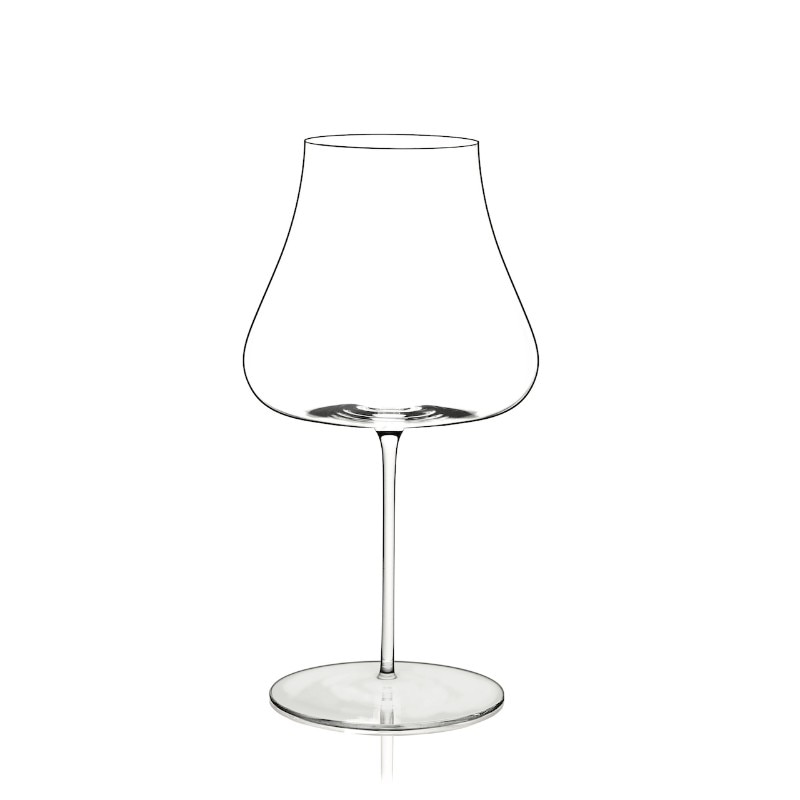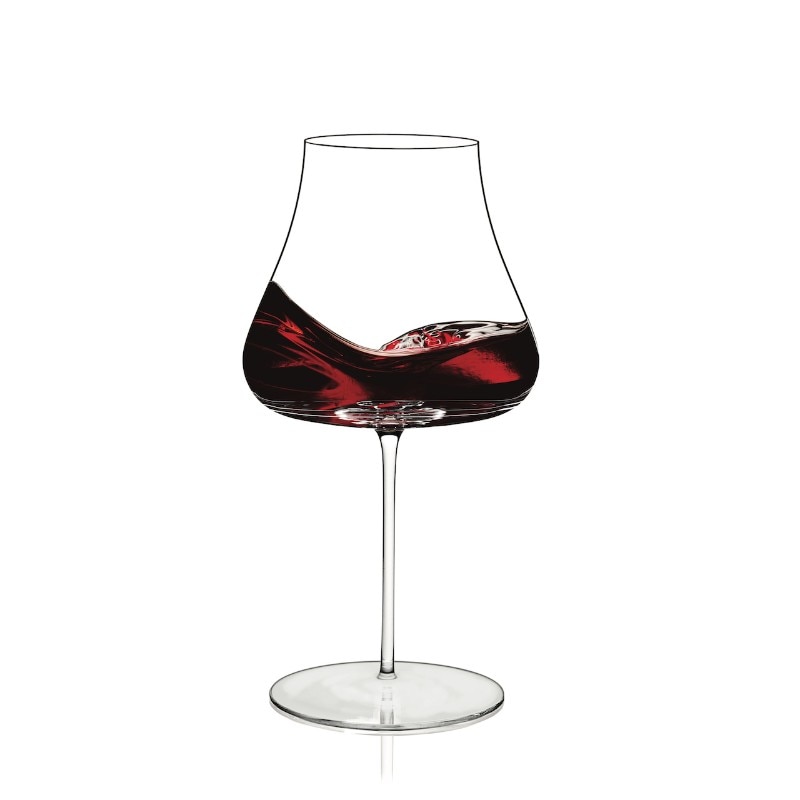Designing an object intended for the senses, starting from what senses are to discover: a wine.
Even just in describing it this way, it is already a matter of design: in fact, it concerns the design of a glass, created around a specific wine after dissecting its structure, components, complexity and aromas.
A trending topic in contemporary winemaking: specificity and multisensoriality. A theme that embraces the most deeply design-related components of projects, those from which experience and lifestyle aspects end up deriving.

A case study can be helpful in exploring such topic, represented here by the latest of the tasting glasses produced by Italian manufacturer Italesse, the T-made 75 designed specifically for and around Barolo wines from the Langhe region.
A project with such a vertical expression succeeds in systemizing all the components of a design process and making them interact. It is a matter of technique: the specific physics and chemistry of a wine determine the way it reaches the taste receptors; a matter of plasticity: it is the shape of the glass to determine that encounter between physics, chemistry and perception; a matter of sensory and emotional factors, converging in the creation of a more and more definite “experience”.
In a panorama that accustoms us to universal glasses, contrasted only by with varietal (white-red-sparkling) ones, these kinds of projects based on specificity and sensoriality – such as Senses, of which the T-made 75 is a part, along with another glass dedicated to Vermentini di Sardegna and Gallura, and the official glass of the Brunello di Montalcino consortium – reopen the discussion on what the starting points are for conceiving such an apparently neutral, but so radically medial object.
In this case, the system of signs on which a whole language of perception is built is based on aromas: to give examples, red fruits, coffee, roses, tobacco, all components with very different weights, destined to reach more or less impetuously palate and smell, requiring therefore a quest for balance, almost entirely depending on the shape of the glass that accommodates them.
Designing by aromas is therefore the first step, but it is from an intimate and profound understanding of everything that makes a wine peculiar that the core of the process springs, from that terroir that is not just a matter of soil, of a vineyard territory of more than 2,200 hectares, but of climate, historical instant, culture of cultivation and taste.
Defining what Barolo could actually mean, and designing the latest Italesse, for example, took 660 tastings of 30 types of Barolo wines, a 14-month process of study and conception, and trials that focused on four prototypes before arriving at the final shape.
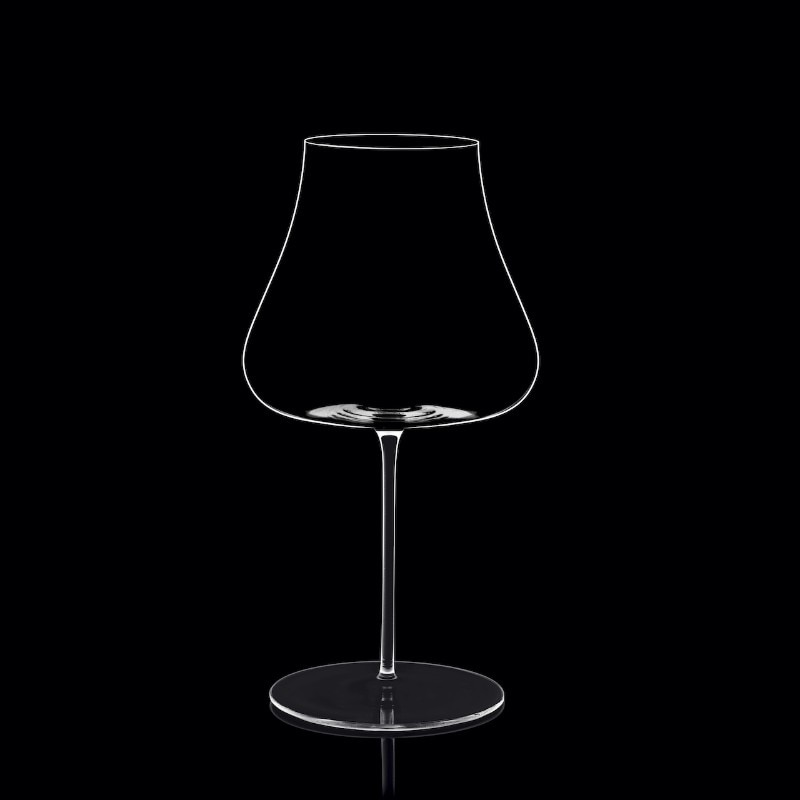
Shape, in the end. Because, though one would have expected a work of direct experimentation on the material – which instead remains the crystalline glass characterizing the whole collection – the definition of shape is the point where all the research condenses: it is a matter that in some ways recalls a work of electronic music, or musical production, in which all interventions on a composition are aiming to “cut off” some components and emphasize others; and in the Barolo case, Italesse, in developing its project together with sommelier Paolo Lauria, sought the shape that could better channel to taste and smell first of all the so-called elegance of the wine, its complexity, even before the alcoholic tones – not erased but smoothened and refined – and the tannin.
The task of a first conveying and directing freshness to the palate and intensity to the nose goes to the bowl and its walls, tapering and enveloping, in conjunction with a very pronounced rim, while the design of the bottom is what works on most sensory adjustments in finesse: it is flat and very wide, enhancing the color and transparency of the Barolo, and especially that aromatic complexity that has the opportunity to stretch all across a horizontal surface, thus unveiling its details.
An interaction between space and matter, which is transformed into an experience of the senses: if not directly architecture, it is design we are talking about, the fundamentals of that relationship between human beings and their perceptible habitat, of which design seeks definitions and forms.





